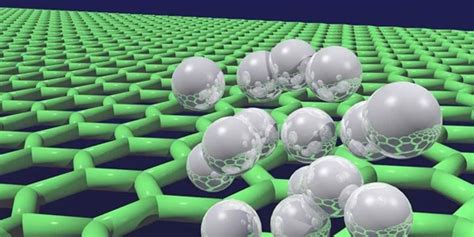Look at the smartphone in your hand, the car in your driveway, or the aircraft flying overhead. We often credit their incredible capabilities to the genius of software engineering or the power of microchips. But beneath the surface, a quieter, more fundamental revolution is taking place—one happening at the atomic level. This is the revolution of next-generation materials, a domain of science and engineering that is unlocking possibilities once confined to science fiction. These are not just slightly better versions of steel, plastic, or silicon; they are entirely new substances with properties that defy conventional wisdom.
This article delves into the heart of this transformation. We will journey into the world of materials science to explore the most groundbreaking substances being developed in labs today. From two-dimensional sheets of carbon stronger than diamond to materials that can heal themselves or bend light in impossible ways, these innovations are the building blocks of our future. They are poised to overhaul every industry, from healthcare and electronics to energy and construction, making our products smarter, stronger, more sustainable, and infinitely more capable. Get ready to discover the silent revolution that is forging the world of tomorrow.
The Dawn of a New Material Age
For millennia, human progress has been defined by the materials we master. The Stone Age, Bronze Age, and Iron Age weren’t just historical labels; they marked fundamental shifts in our ability to create tools, build shelters, and shape our environment. We are now living in the early days of a new material age, one driven not by a single element, but by our ability to design and manipulate matter at the nanoscale.
So, what qualifies a substance as a “next-generation material”?
A next-gen material is a substance intentionally designed and engineered to exhibit novel, superior properties that are not found in conventional materials. The key lies in the control over its fundamental structure. Scientists are no longer just discovering materials; they are architecting them atom by atom. This precision is made possible by a confluence of advancements:
- Nanotechnology: The ability to see and move individual atoms and molecules has allowed us to build materials from the ground up, giving them extraordinary characteristics.
- Computational Modeling: Supercomputers can now simulate the behavior of materials at the quantum level, allowing researchers to design and test new substances in a virtual environment before ever synthesizing them in a lab. This drastically accelerates the pace of discovery.
- Advanced Manufacturing: Techniques like 3D printing (additive manufacturing) and atomic layer deposition allow for the creation of complex, customized structures that were previously impossible to produce.
This new paradigm is creating a class of materials that are lighter, stronger, more conductive, more resilient, and “smarter” than anything that has come before. Let’s meet the superstars of this new age.
The Superstars of Materials Science: A Deep Dive
While countless new materials are in development, a few stand out for their incredible potential and the sheer breadth of their applications. These are the headliners of the materials revolution.
A. Graphene: The Two-Dimensional Wonder
Imagine a material one million times thinner than a human hair, yet over 200 times stronger than steel. A material that is almost perfectly transparent, yet conducts electricity and heat better than any known substance at room temperature. This is graphene.
First isolated in 2004 by Andre Geim and Konstantin Novoselov at the University of Manchester—a feat that earned them the Nobel Prize in Physics—graphene is a single, flat layer of carbon atoms arranged in a hexagonal honeycomb lattice. It is, in essence, a two-dimensional material.
- Mind-Bending Properties: Its list of superlatives is astonishing. It’s the strongest material ever tested, the most conductive, the most flexible, and the most impermeable—not even a helium atom can pass through it.
- Revolutionary Applications: The potential uses for graphene span nearly every industry imaginable.
- Electronics: It could lead to ultra-fast, flexible, and transparent electronics. Imagine rollable tablets, wearable devices woven into clothing, and display screens you can see through.
- Energy: Graphene-based batteries and supercapacitors could charge in seconds instead of hours and hold significantly more power. Its conductivity could also create hyper-efficient solar cells.
- Water Filtration: Graphene oxide membranes can act as perfect filters, capable of turning saltwater into fresh drinking water with remarkable efficiency.
- Composites: Adding even a tiny amount of graphene to plastics, metals, or other materials can make them dramatically stronger, lighter, and more durable.
- Current Challenges: The biggest hurdle for graphene has been producing large, high-quality sheets of it cheaply. While progress is being made rapidly, scaling up production from the lab to industrial levels remains the final frontier before we see it in every product.
B. Metamaterials: Bending the Rules of Physics
Unlike graphene, which is a specific substance, metamaterials are not found in nature. They are composite structures, engineered to exhibit properties not dictated by their chemical composition but by their intricate, repeating internal geometry. By designing these tiny internal structures, scientists can make metamaterials manipulate electromagnetic and sound waves in ways that are impossible for natural materials.
- Unnatural Abilities: The most famous application of metamaterials is the concept of an “invisibility cloak.” By designing a material that can bend light waves around an object, it would render that object invisible to the observer. While a true, broadband invisibility cloak is still in the realm of theory, rudimentary versions have already been demonstrated in labs for microwave and other frequencies.
- Revolutionary Applications:
- Antennas: Metamaterials can create incredibly powerful, compact, and efficient antennas for 5G, 6G, and satellite communications.
- Lenses: They can be used to create “superlenses” that can see details smaller than the wavelength of light itself, breaking a long-held barrier in optics and enabling vastly more powerful microscopes.
- Acoustics: Just as they can bend light, metamaterials can manipulate sound waves to create “acoustic cloaks” or zones of perfect silence. They could also be used to design concert halls with perfect acoustics or to protect buildings from earthquake tremors.
- Wireless Power: Efficiently transferring power over a distance without wires is another tantalizing possibility being explored with metamaterials.
- Current Challenges: Metamaterials are incredibly complex to design and fabricate. Each one must be purpose-built for a specific frequency of light or sound, making them difficult to produce for broadband applications.
C. Self-Healing Polymers: The Materials That Mend Themselves

Every product we own is subject to wear and tear. Scratches on a car, cracks in a phone screen, and microscopic fissures in an airplane wing are all part of the lifecycle of an object. But what if materials could heal this damage themselves, just as biological skin does? This is the promise of self-healing polymers.
These smart materials have an intrinsic ability to repair damage autonomously and automatically. There are two primary approaches to achieving this:
Capsule-Based: The polymer is embedded with millions of microscopic capsules containing a healing agent (a liquid monomer). When a crack forms, it ruptures the capsules, releasing the agent. The agent then flows into the crack and comes into contact with a catalyst embedded in the material, causing it to polymerize (harden) and effectively “heal” the damage.
Intrinsic Healing: This approach involves designing polymer chains with special chemical bonds that can break and reform. When the material is damaged, applying a stimulus like heat or light can cause these bonds to reconnect, reversing the damage.
Revolutionary Applications:
- Coatings: Imagine a car paint that fixes its own scratches or a protective coating on a bridge that automatically seals cracks to prevent corrosion.
- Consumer Products: Longer-lasting phone cases, shoes that repair their own scuffs, and furniture that remains pristine for years are all on the horizon.
- Aerospace: For aircraft and spacecraft, where structural integrity is a matter of life and death, self-healing composites could autonomously repair micro-fractures caused by stress and fatigue, dramatically improving safety and reducing maintenance costs.
- Medicine: Self-healing hydrogels could be used in wound dressings or as scaffolds for tissue engineering.
Current Challenges: The main challenges are ensuring the material can heal multiple times in the same spot, improving the speed and strength of the healed area, and making the technology cost-effective for widespread use.
D. Aerogels: Solid Smoke, Infinite Possibilities
If you were to hold a piece of aerogel, it would feel almost like holding nothing at all. Known colloquially as “solid smoke” or “frozen smoke,” aerogel holds multiple world records, including being the lightest solid material in the world.
Aerogel is not a single substance but a class of synthetic porous ultralight materials derived from a gel, in which the liquid component of the gel has been replaced with a gas without significant collapse of the gel structure. The result is a solid that is over 99% air.
- Extreme Properties: Its defining characteristic is its incredible thermal insulation capability. The vast network of nanopores inside the aerogel traps air, preventing heat from transferring through it, making it the most effective insulator known to man. It is also surprisingly strong for its weight and can have hydrophobic (water-repelling) properties.
- Revolutionary Applications:
- Insulation: NASA has used aerogels for decades to insulate spacecraft and rovers from the extreme temperatures of space. On Earth, it could be used to create super-insulating windows, clothing, and building materials, drastically cutting down on energy consumption for heating and cooling.
- Science: NASA’s Stardust mission famously used an aerogel block to capture dust particles from a comet’s tail. The particles hit the aerogel at high velocity but were gently brought to a stop without being damaged.
- Absorption: Its high surface area makes it an excellent absorbent for cleaning up chemical spills.
- Current Challenges: The primary drawbacks of traditional silica aerogels are their high cost of production and their brittle nature. However, newer polymer-based aerogels are being developed that are far more durable and flexible, opening the door to a wider range of applications.
The Ripple Effect: Transforming Entire Industries

The impact of these materials is not confined to individual products. They are catalysts for a wholesale transformation across the most critical sectors of our global economy.
- A. Healthcare and Medicine: Next-gen materials are ushering in an era of personalized and regenerative medicine. Biocompatible materials are used for implants that the body won’t reject. Graphene-based biosensors could provide real-time health monitoring. Self-healing polymers could be used for more effective wound dressings, and materials engineered for targeted drug delivery can transport medicine directly to cancer cells, minimizing side effects.
- B. Electronics and Computing: The quest for faster, smaller, and more powerful electronics is limited by the properties of silicon. Graphene and other 2D materials could replace silicon to create a new generation of transistors. Flexible electronics will change the form factor of all our devices, while materials with unique quantum properties are essential for building the quantum computers of the future.
- C. Energy and Sustainability: This is perhaps the area of greatest impact. Lightweight carbon fiber composites in cars and airplanes reduce fuel consumption. More efficient solar cells made from new materials will accelerate our transition to renewable energy. Graphene-based batteries will solve the energy storage problem. And specially designed materials could even capture carbon dioxide directly from the atmosphere, helping to combat climate change.
- D. Aerospace and Defense: The aerospace industry is an early adopter of advanced materials. Lighter and stronger composites reduce aircraft weight, improving fuel efficiency and range. Materials that can withstand extreme temperatures are critical for hypersonic flight. Metamaterials are being developed for advanced stealth capabilities, making aircraft nearly invisible to radar.
- E. Construction and Infrastructure: Our cities and infrastructure could become more resilient and sustainable. Self-healing concrete could automatically repair its own cracks, dramatically extending the lifespan of bridges and buildings. Aerogel insulation could make buildings “net-zero” in terms of energy consumption. Smart materials could even allow structures to adapt to changing environmental conditions, such as earthquakes.
Forging Tomorrow’s World, One Atom at a Time
We stand at a pivotal moment in human history. The materials revolution is not a distant, futuristic concept; it is happening now. The discoveries being made in labs today are laying the foundation for the technologies and products that will define the 21st century and beyond. From the invisible power of metamaterials to the tangible strength of graphene, these next-generation materials are moving beyond the theoretical and into the practical.
While challenges of cost, scalability, and integration remain, the pace of innovation is relentless. The journey from the laboratory bench to the consumer market is shrinking every year. The silent, foundational work of materials scientists is what will enable the next great leaps in technology, health, and sustainability. The future is not just being coded; it is being forged, one atom at a time, from the very substance of reality itself.













